Bouius, Hielke (Captain)
Killed in Flying Accident 1968-03-15
Service
RCAF
Unit
425 Sqn- Squadron
Je te plumerai I shall pluck you
Base
Rank
Captain
Position
Captain
Service Numbers
224818
McDonnell Voodoo CF-101
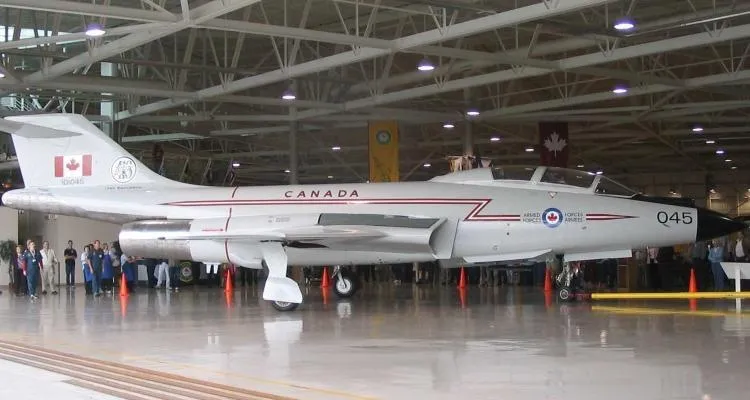
The McDonnell CF-101 Voodoo was an all-weather interceptor fighter operated by the RCAF and the Canadian Forces between 1961 and 1987. They were manufactured by the McDonnell Aircraft Corporation of St. Louis, Missouri for the USAF (as F-101s), and later sold to Canada. Canada purchased F-101s in two batches. The Royal Canadian Air Force purchased 56 F-101B and 10 F-101F aircraft from the United States in 1961. The surviving first batch CF-101s were exchanged in 1970 ââ"�¬â€œ 1972 for 56 lower time USAF F-101B and 10 F-101F aircraft. The second batch of Voodoos served as front line interceptors for the Canadian Armed Forces until the end of 1984. Additionally, one further F-101 (a unique electronic warfare conversion) was leased to Canada from 1982 to 1987.
The Voodoos replaced the obsolete Avro CF-100 Canuck in the RCAF's all-weather fighter squadrons. The Voodoo's primary armament was nuclear AIR-2A Genie unguided air-to-air rockets, and there was significant political controversy in Canada about their adoption. Although they never fired a weapon in wartime, the CF-101 served as Canada's primary means of air defence from Quick Reaction Alert facilities at Canadian airbases. Canadian Voodoo operations finally concluded in April 1987 and on their retirement, they were replaced with McDonnell Douglas CF-118 Hornet fighters. Many examples are preserved in museums and parks in Canada and the USA.
The first deliveries of Voodoos to Canada took place under the designation Operation Queens Row between July of 1961 and May of 1962. The delivery included 25 F-101B-115-MCs and 31 F-10B-120-MCs, all produced in 1959, and ten F-101F two-seat operational trainers, including four F-101F-116-MCs and six F-101F-121-MCs. RCAF CF-101Bs and CF-101Fs were assigned new Canadian serial numbers using the last three digits of their USAF serials prefixed by the number 17. The first 45 CF-101Bs and CF-101Fs entered operational service on 13 Nov 1961 with No. 410 "Cougar" Squadron based at Ottawa, Ontario. Voodoos were flown by No. 409 "Nighthawk" Squadron based at Comox, British Columbia, No. 414 "Black Knight" Squadron based at North Bay, Ontario, No. 416 "Lynx" Squadron based at Chatham, New Brunswick, and No. 425 Squadron "Alouette" Squadron based at Bagotville, Quebec.
In 1970-71, the 46 surviving CF-101Bs and CF-101Fs were exchanged with the USAF for 56 refurbished and modernized F-101B interceptors and ten new F-101F operational trainers under "Operation Peace Wings". These ex-USAF Voodoos were from earlier production batches, but had been upgraded with infrared sensors and improved fire control systems as part of "Project Bold Journey." In Canadian service, this new batch of 66 Voodoos were assigned consecutive serial numbers in the 101001 to 101066 range, with the ten CF-101Fs being given the numbers 101001/101007, 101022, 101024 and 101052. These modernized Voodoos remained in service with Nos. 409, 410, 416, and 425 Squadrons until replaced by McDonnell Douglas CF-188A and CF-188B Hornets in the early 1980s.Harold A Skaarup Web Page
425 Sqn Je te plumerai ("Alouette")
History of the Squadron during World War II (Aircraft: Wellington III, X, Halifax III, Lancaster X)

425 Squadron was formed at Dishforth, Yorkshire, UK on June 25, 1942 as the RCAF's twenty-second squadron, and fifth bomber squadron, to be formed overseas in WWII. At the time it was part of No 4 Group, RAF Bomber Command. It was unique in being designated "French-Canadian" and every effort was made to find French Canadian airmen elsewhere in Bomber Command who could be transferred to the squadron. It became operational in October, 1942, flying Wellington Mk III aircraft with the squadron code letters KW. It transferred to No 6 (RCAF) Group, Bomber Command when that was formed on January 1, 1943, although remaining at Dishforth. In March, the squadron re-equipped with Wellington X's and from June to October operated from bases in Tunisia (Kairouan/Zina and Hani East airfields) in support of the Allied invasions of Sicily and Italy. In November 1943 the squadron returned briefly to Dishforth and re-equipped with Halifax III aircraft before moving to Tholthorpe, Yorkshire in December, as part of No 62 (RCAF) Base of 6 Group. It remained at Tholthorpe until the end of the war in Europe. In May and June of 1945 it re-equipped with Lancaster X aircraft, in preparation for joining the Tiger Force for attacks on Japan. The surrender of Japan caused the disbandment of the Squadron at Debert, Nova Scotia , on September 5, 1945.
Overall, the squadron flew 328 missions, involving 3694 sorties, in the course of which 9152 tons of bombs were dropped and 55 aircraft were lost. Squadron personnel gained 2 MBE's, 63 DFC's and 4 Bars to DFC, 2 GM's, 18 DFM's, 1 DFC(USA), and 4 MiD's. Battle Honours were:English Channel and North Sea 1943-45, Baltic 1944-45, Fortress Europe 1943-44, France and Germany 1944-45, Biscay Ports 1943-44, Ruhr 1943-45, Berlin 1944, German Ports 1943-45, Normandy 1944, Rhine, Biscay 1943-44, Sicily 1943, Italy 1943, Salerno. Wikipedia, Moyes, Kostenuk and Griffin
Squadron History (Bomber Command Museum PDF)
Maps for Movements of 425 Squadron 1942-45
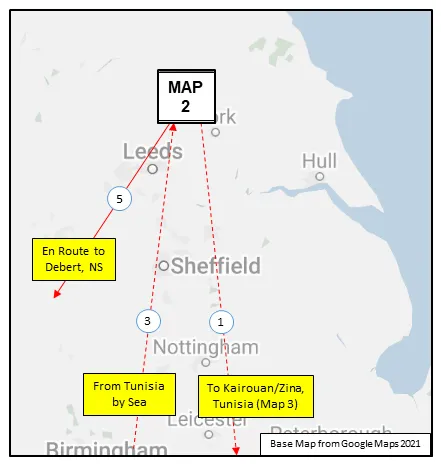 MAP 1: 425 Squadron Movements 1942-45 (right-click on image to display enlarged in new tab) | 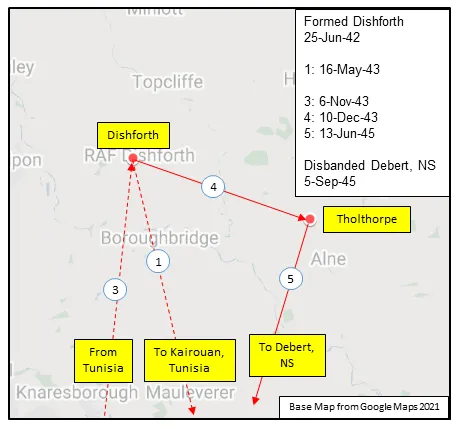 MAP 2: 425 Squadron Movements 1942-45 (detail of Map 1) | 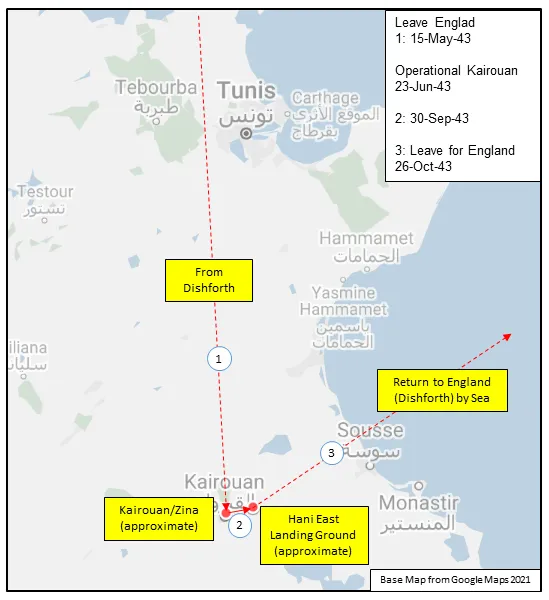 MAP 3: 425 Squadron Movements in North Africa 1943 |
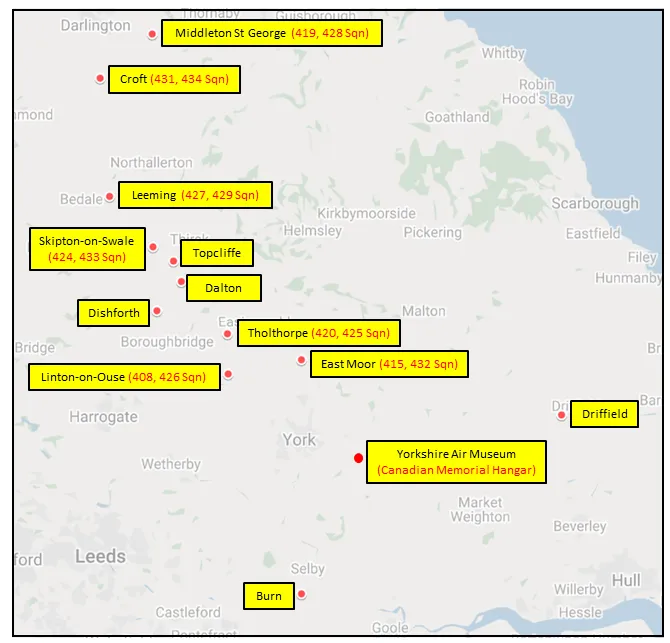
425 Squadron History Summary 1942-45
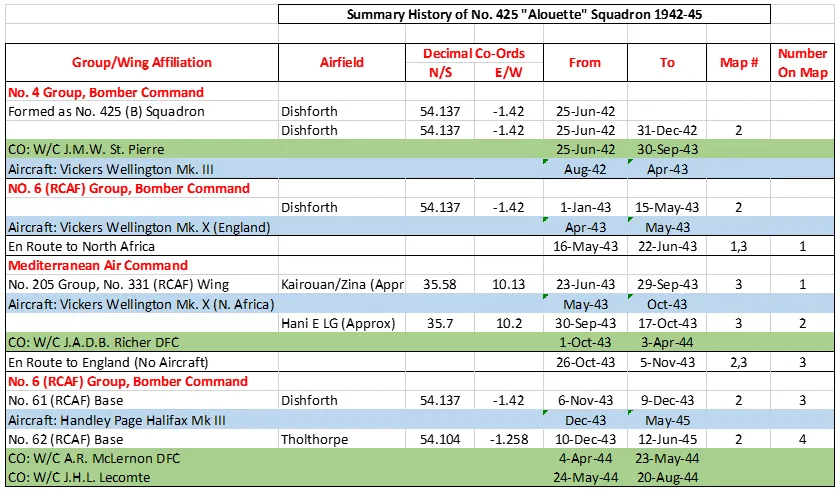
425 Squadron History Summary 1942-45 Page 2

History of the Squadron Post-WWII (Aircraft: Canuck, Voodoo, Hornet)
The squadron was re-formed as an All-Weather (Fighter) unit at St Hubert (Montreal), Quebec on 1 October 1954. It flew CF-100 Canuck aircraft on North American air defence. Selected as one of five units to be re-equipped with CF-101 (Voodoo) aircraft, it was deactivated on 1 May 1961 pending delivery of the aircraft. Reactivated at Namao (Edmonton), Alberta on 15 October 1961, the squadron initially received the trainer version of the CF-101 and served as a training unit to convert the remaining four squadrons to this aircraft. It afterwards moved to Bagotville, Quebec, in July 1962, and was declared operational on 1 October when No. 3 All-Weather (Fighter) Operational Training Unit assumed responsibility for all future CF-101 training. On 1 February 1968 the squadron was integrated into the Canadian Armed Forces. From 1982, the Canadian Forces started to acquire CF-18 Hornets; 425 Sqn received them in 1985. In 2005, 433 Squadron was merged into 425 Squadron. 425 Tactical Fighter Squadron is an integral part of NORAD and of the North Atlantic Treaty Organization (NATO). In peacetime, the squadron's fighters provide continuous surveillance of the East Coast of Canada. In addition, it must be ready for rapid deployment anywhere in the world in support of NATO or contingency operations.Wikipedia, Kostenuk & Griffin, and www.canada.ca/en/air-force/corporate/squadrons/425-squadron.html
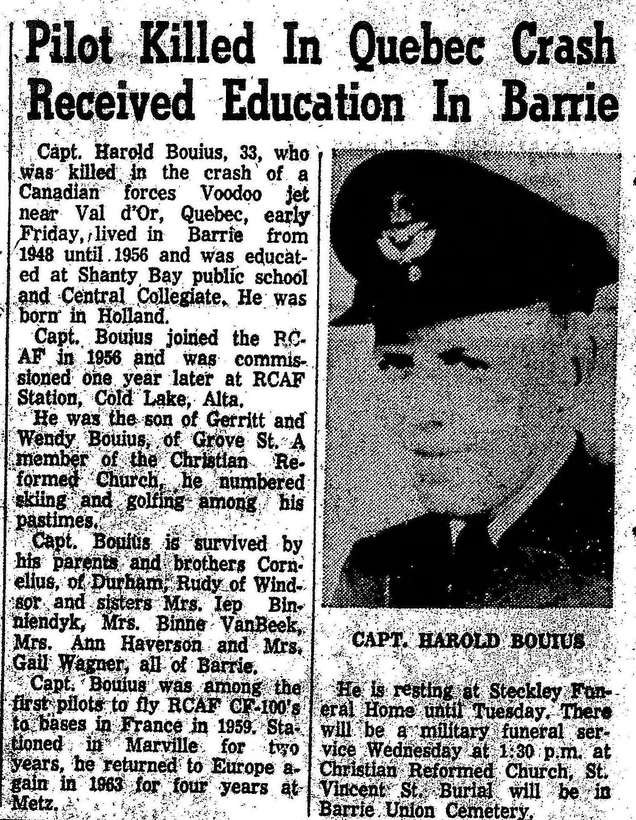

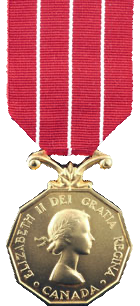
 Friesland, Netherlands
Friesland, Netherlands Canadian Virtual War Memorial
Canadian Virtual War Memorial www.findagrave.com
www.findagrave.com

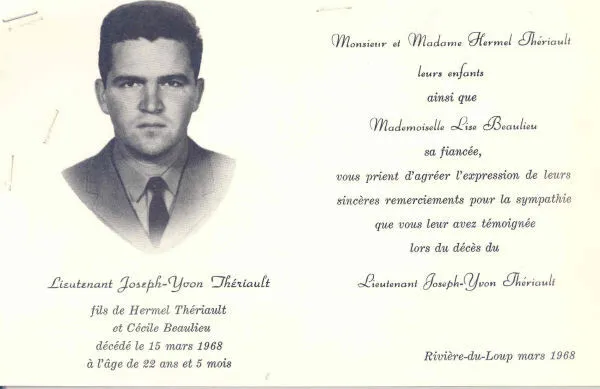
 Harold A Skaarup Web Page
Harold A Skaarup Web Page Wikipedia McDonnell CF-101 Voodoo
Wikipedia McDonnell CF-101 Voodoo YouTube McDonnell CF-101 Voodoo
YouTube McDonnell CF-101 Voodoo